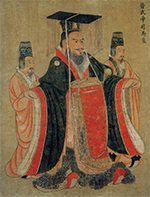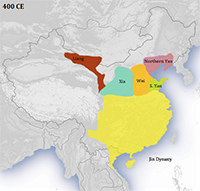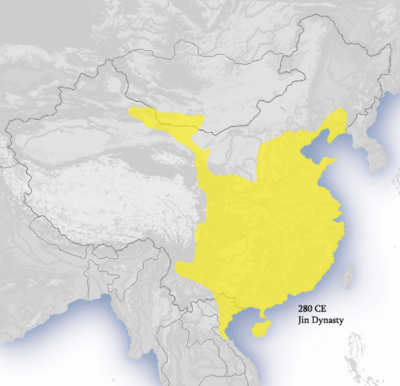China's Jin Dynasty
A decadelong set of preparations resulted in a large-scale invasion across the Yangtze River, and the result was a Jin victory over the Wu, in 280. The surrender of Emperor Sun Hao in that year resulted in overall preeminence of the Jin, who ruled over a set of lands that roughly equalled that of the recently departed Han. Sima Yan then took on the name of Emperor Wu. 
Wu, ruling over a vast amount of land, chose to curry favor not with the powerful nobles who had helped him achieve victory but with members of his own family, even allowing these royal princes to maintain their own armies. More than a decade of internecine struggles resulted in the Rebellions of the Eight Princes, weakening the emperor's hold on power. Emperor Wu died in 290, and a succession controversy descended into a major civil war. The internal struggle lasted more than a decade. During that time period, the Xiongnu threw off the yoke of slavery and declared their freedom, taking up arms while the royal factions were consumed with fighting amongst themselves. What was left of the Jin court fled to Jiankang, in 316. 
The following year, Sima Rui founded what historians call the Eastern Jin. This dynasty ruled much less territory, although the Yangtze formed a natural barrier against the rebellious tribes in the north, who turned their newfound freedom into an opportunity to struggle with one another. Out of that struggle came a powerful state whose rulers called it Former Qin. A large army from that state marched on Jin lands in 383 but found defeat at Fei River at the hands of a much smaller army. That victory allowed the Eastern Jin to carry on–for a few decades, anyway. The weakened Jin found itself at war from within, and a combination of assassination and treachery resulted in the ascent of Liu Yu in 420 and the declaration of the Liu Song. Ruling over China from then and for nearly two centuries were the Northern and Southern Dynasties. One monumental advancement during the time of the Jin was the advent of the modern stirrup, which allowed soldiers on horseback to stay in the saddle for long periods of time and also to fight effectively without dismounting. Chinese artists advanced in the production of celadon porcelain during the time of the Jin Dynasties. Jinkiang rose as a major economic and political power, swelled by a wave of migration from the north. Scientific pursuits included advances in astronomy, chemistry, and medicine. One of the most well-known scientists of early Chinese history, Ge Hong (Ko Hung), lived during this time. He produced many writings on medicine, including descriptions of the effects of serious diseases. He was equally well-known for his pursuit of alchemy. |
|



 The Jin Dynasty rose out of the warfare that punctuated the
The Jin Dynasty rose out of the warfare that punctuated the 
